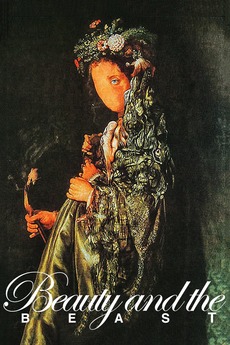Beauty and the Beast
Beauty and the Beast is directed by the Czech New Wave master Juraj Herz. As you might expect, it is based on the 18th century French folktale. Set around the same time in Eastern Europe, Herz’s adaptation is the darkest of all.
A widowed merchant lives with his three daughters and two of them are preparing for their marriage. When the merchant is robbed of all the expensive customary articles for the marriage, he goes bankrupt. To mend his financial troubles, he comes across a desolate castle in the middle of a forest and looks to loot any form of wealth. But his biggest sin that enrages the Beast, who lives there, is plucking a beautiful rose. The father promises to return to give up his life to the beast after he meets his daughters one last time. To save his poor father, Julie the youngest daughter goes to the castle to offer her life instead. They form an affectionate bond without confronting each other and their love for each other might help them accept themselves and one another.
Herz’s beast is not the usual lion which is always at the top of the food chain. To emphasize some pathos towards the human side of the beast, he is portrayed as a bird. The curse is left unexplained and is irrelevant if you think about it. While the beast, named Nevtor, struggles with his two sides, Julie is happy spending time developing a genuine connection that she could not with anyone else in her life. The chemistry is very strong despite the characters never talking face-to-face. This is more commendable considering Vlastimil Harapes’ detailed prosthetic make up does not get in the way of emoting. However, the key here is also the cinematic quality of this adaptation. It is drenched in gloomy gothic imagery which also makes it the most atmospheric adaptation. The almost degrading surfaces, spider webs, thin blanket of fog add a lot of texture to the visuals. The confined spaces feel vaster than they should, as if the dark corners represent a never-ending abyss. It is less of a surreal telling and more natural, earthy one that helps the audience see beauty in the darkest places or people than just romanticizing them blindly. The piano and organ led melodies are hauntingly beautiful accompaniment to all the scenes. At every turn, Herz’s film feels eerie yet beautiful which supplements the narrative conveyance.
Blending fairy tale and Czechian horror, Herz’s adaptation is less about the transformative power of love and more about being on the verge of it, floating in a mix of both beauty and the beastly.
Disclaimer: The above review solely illustrates the views of the writer.




